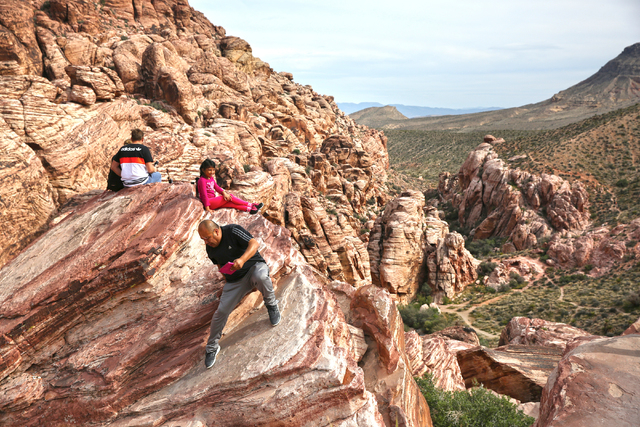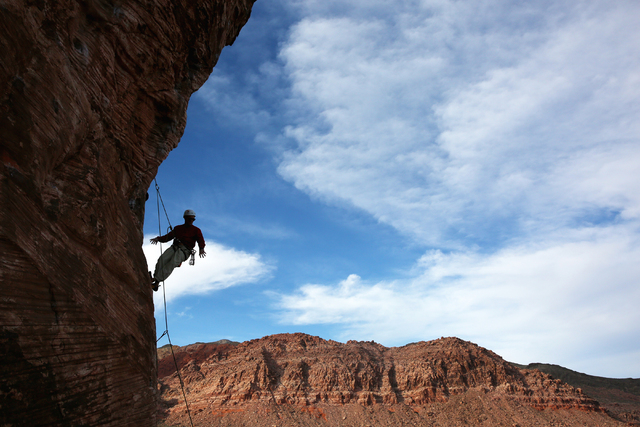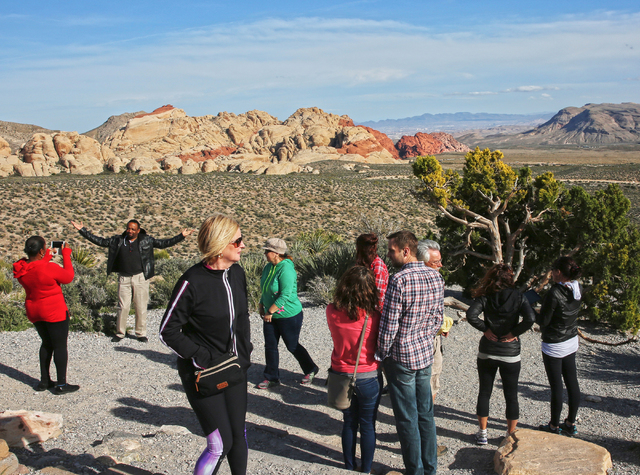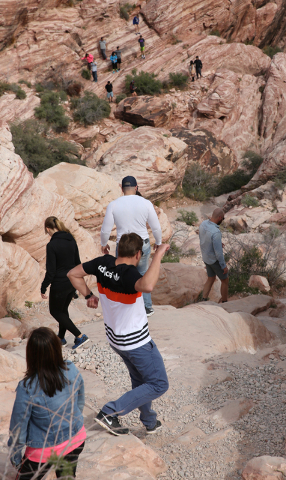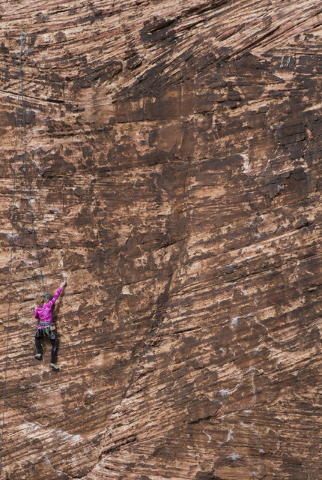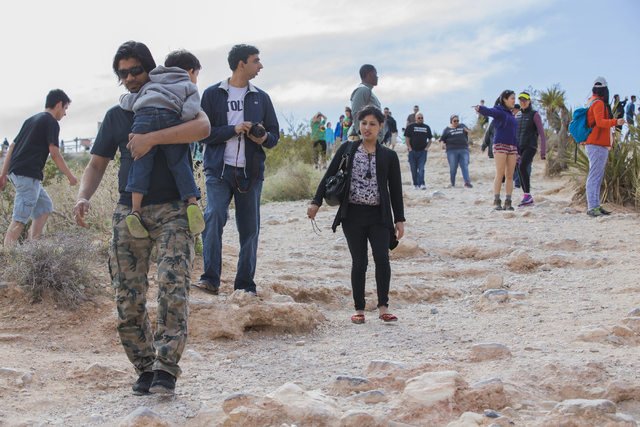Not preparing for trouble puts Red Rock Canyon hikers in danger — VIDEO
By the time the water began to rise, it was nearly too late.
Scrambling up the rock face under darkening skies and torrents of rain, Ryan Doble — 17 at the time, 22 now — was with five friends at Red Rock Canyon, trying to escape rising waters of a flash flood.
Though the group had met regularly to hike and climb at Red Rock, they had not checked the weather before they went out.
Though they had traversed many trails and courses, they had not researched the one where they found themselves trapped.
And though they had brought more materials and had more experience than many other visitors, they had failed to prepare and plan.
“We were dumb high school kids,” Doble recalled. “We weren’t super-prepared for anything.”
They had come out for the day just like so many of the visitors to Red Rock Conservation Area — a number totaling more than 2 million in 2015, said Kirsten Cannon, a spokeswoman for the Bureau of Land Management, which is in charge of the conservation area. In 1982, Red Rock saw only 1 percent of that figure, just 20,000 visitors, she said. With more visitors coming each year, and with the recent spate of hikers who have been rescued or have sometimes died in Red Rock, safety seems more important than ever.
Stuck in a gorge with sheer rock faces hundreds of feet high on either side, Doble came to terms with the predicament. He urged the group to get to what higher ground they could find and tried to contact emergency services. Doble, the only hiker in the group whose phone wasn’t damaged by the rushing water, was able to get a signal, but was unable to contact emergency services. The group had to get out on their own.
Doble assessed what materials they had on hand and discovered a length of rope in his pack. Fashioning attachments, the group was able to use the rope to rappel and escape the gorge, he said.
Others have not been so lucky.
In a career spanning three decades, it is a story that retired park ranger Bob McKreever has heard many times.
McKreever worked at Lake Mead for the last 20 years of his career with the National Park Service, working in law enforcement and emergency services. He has worked in search and rescue, emergency medical response, firefighting, rock climbing and even scuba diving.
He has seen many people get out of dangerous situations and attributes those successes to one factor: “Us. The park rangers.”
The “number one reason” people get into trouble on the trail is lack of preparation, McKreever said.
“They have no idea what waits for them out in the outdoors in a desert. And they don’t prepare for it,” he said.
Too often, he said, people extend themselves beyond their capabilities. “You gotta know your limitations,” he said.
Proper planning ensures a safe trip, and any gear should be properly tested and maintained well in advance, McKeever said. He encourages hikers to stop by the visitor’s center, get a map and check the weather before they head out.
“Know where you’re going, research as much of it as you can before you get there, tell somebody else where you’re going — not only that, but when you plan to be back,” McKeever said. “If you’re not back, they can notify somebody.”
Wear proper clothing, including good shoes or boots, full-length pants and long-sleeve shirts, he said. In the summer, a wide-brimmed hat is crucial for blocking the sun, preventing sunburn and reducing the risk of dehydration.
People without experience and training should never hike alone, he said. “Always have a buddy.”
A survival kit is crucial for any hiker, and McKeever offered tips on what to include.
A pocket knife or multitool is vital in a survival situation. “Something they can be used to cut something, trim a shrub, cut clothing away— it just has a multitude of uses,” he said.
A way to start a fire — a simple lighter or waterproof matches — and some tinder are critical, he said.
A space blanket should be part of the kit; it can be used for warmth in the cold and to create shade in the heat. “Most people don’t realize how quickly a desert sun will bake your brain,” he said.
McKreever suggests carrying items — such as a signal mirror, a whistle and a flashlight — that will allow a lost or stuck hiker to communicate with others.
Water, above all, is the most essential item, McKreever said.
“Don’t go farther than you have the capability to support yourself,” he said. In the desert sun, dehydration, heat stroke and death can come quickly, and having enough water and getting out of the sun can mean the difference between life and death.
With preparedness and planning, many situations are easily managed, or avoided altogether, McKeever said. Hikers who stay calm, plan ahead and carry the right equipment “get home at night, no problem.”
Contact Christian Bertolaccini at cbertolaccini@reviewjournal.com and 702-383-0381. Find him on Twitter: @bertolaccinic
Recent Incidents
Hiker dies after 'medical episode'
Windy weather hampers rescue of hikers
Washington hiker dies after fall



